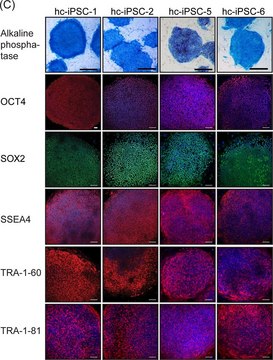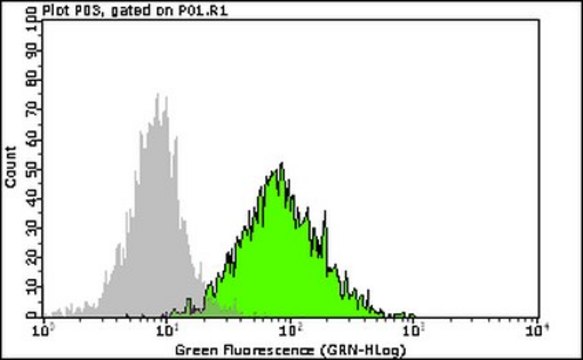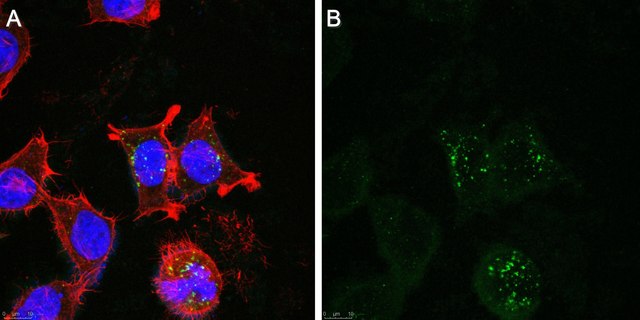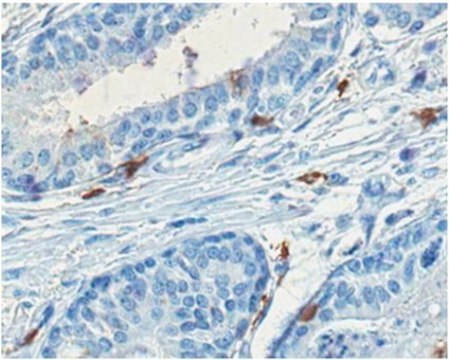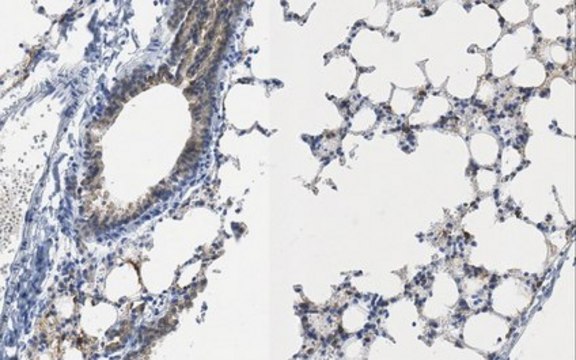MAB4303-I
Anti-Stage-Specific Embryonic Antigen-3 Antibody, clone MC-631
clone MC-631, from rat
Synonym(s):
Stage-Specific Embryonic Antigen-3
About This Item
Recommended Products
biological source
rat
Quality Level
antibody form
purified antibody
antibody product type
primary antibodies
clone
MC-631, monoclonal
species reactivity
human
species reactivity (predicted by homology)
mouse
technique(s)
flow cytometry: suitable
immunocytochemistry: suitable
immunofluorescence: suitable
immunohistochemistry: suitable
isotype
IgMκ
shipped in
wet ice
target post-translational modification
unmodified
Related Categories
General description
Specificity
Immunogen
Application
Immunocytochemistry Analysis: A representative lot detected SSEA-3 immunoreactivity among T
cell-derived iPSCs (TiPSCs) by fluorescent immunocytochemistry (Kishino, Y., et al. (2014). PLoS One. 9(5):e97397).
Immunocytochemistry Analysis: A representative lot detected the presence of SSEA-3-positive cancer stem cells (CSCs) among cultured HCT116 colorectal cancer (CRC) cells by fluorescent immunocytochemistry (Suzuki, Y., et al. (2013). Int. J. Oncol. 42(1):161-167).
Immunocytochemistry Analysis: A representative lot detected SSEA-3 immunoreactivity among induced pluripotent stem (iPS) cells from human molars-derived mesenchymal stromal cells (MSCs) by fluorescent immunocytochemistry (Oda, Y., et al. (2010). J. Biol. Chem. 285(38):29270-29278).
Flow Cytometry Analysis: A representative lot detected the presence of SSEA-3-positive cancer stem cells (CSCs) in five cultured colorectal cancer (CRC) cell lines, HCT116, Caco-2, DLD-1, HT-29, and SW480 (Suzuki, Y., et al. (2013). Int. J. Oncol. 42(1):161-167).
Immunofluorescence Analysis: A representative lot detected a mall number of SSEA-3-positive stromal cells in normal colorectal epithelia and SSEA-3-positive cancers in colorectal adenocarcinomas by fluorescent immunohistochemistry using frozen tissue sections (Suzuki, Y., et al. (2013). Int. J. Oncol. 42(1):161-167).
Stem Cell Research
Cell Cycle, DNA Replication & Repair
Quality
Flow Cytometry Analysis: 1.0 µg of this antibody detected Stage-Specific Embryonic Antigen-3 in H9 cells.
Linkage
Physical form
Storage and Stability
Other Notes
Disclaimer
Not finding the right product?
Try our Product Selector Tool.
Storage Class Code
10 - Combustible liquids
WGK
WGK 2
Flash Point(F)
Not applicable
Flash Point(C)
Not applicable
Certificates of Analysis (COA)
Search for Certificates of Analysis (COA) by entering the products Lot/Batch Number. Lot and Batch Numbers can be found on a product’s label following the words ‘Lot’ or ‘Batch’.
Already Own This Product?
Find documentation for the products that you have recently purchased in the Document Library.
Our team of scientists has experience in all areas of research including Life Science, Material Science, Chemical Synthesis, Chromatography, Analytical and many others.
Contact Technical Service